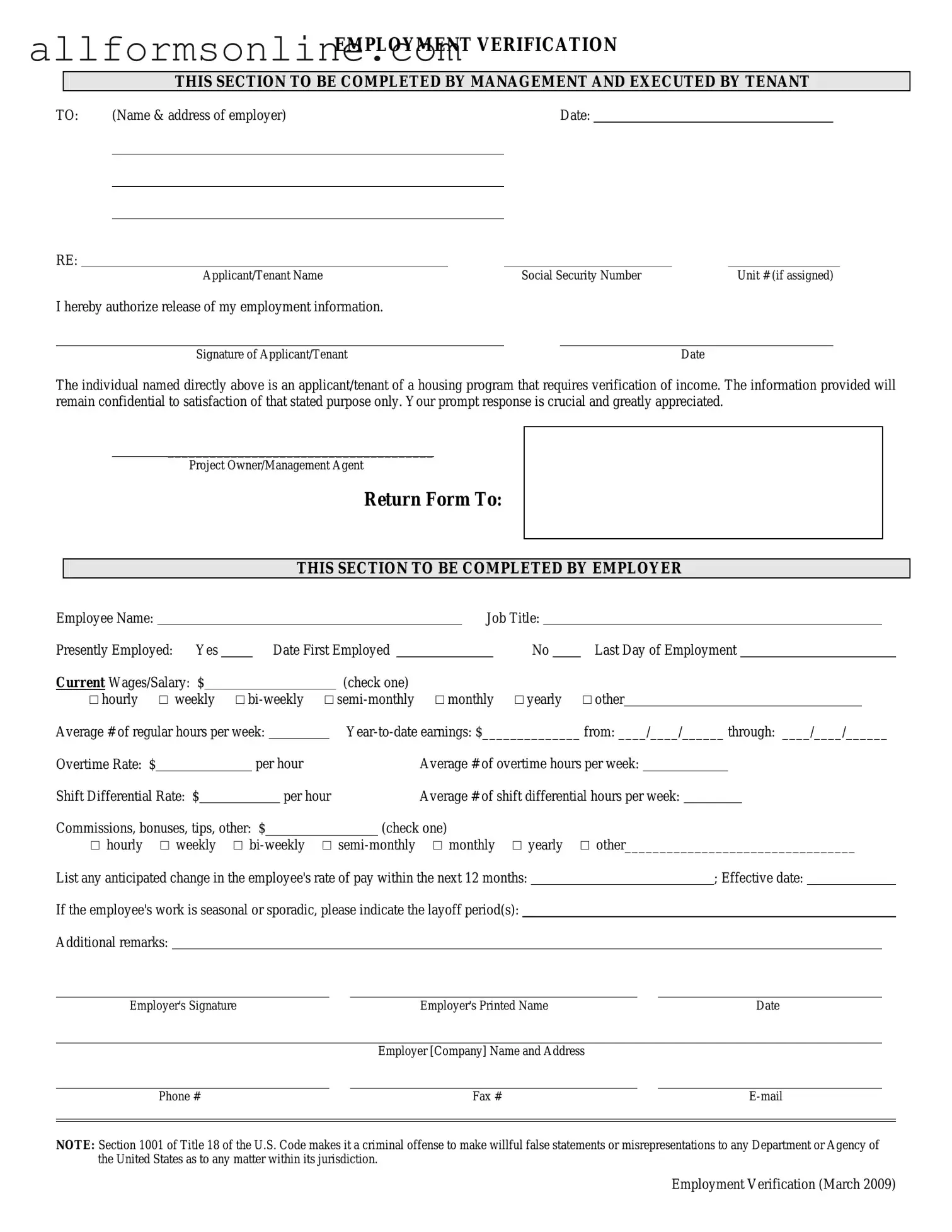What is an employment verification form?
An employment verification form is a document used by employers to confirm the employment status of an individual. This form typically includes details such as the employee's job title, dates of employment, and salary information. It serves as a crucial tool for various purposes, including background checks, loan applications, and rental agreements.
Who typically requests an employment verification form?
Various parties may request an employment verification form. Commonly, prospective employers seek this information to ensure that a candidate has the experience and qualifications claimed. Additionally, financial institutions might request it when assessing an individual's creditworthiness for loans or mortgages. Landlords may also ask for verification to confirm a tenant's ability to pay rent.
What information is usually included in an employment verification form?
Generally, an employment verification form includes the employee's name, job title, dates of employment, salary or hourly wage, and sometimes the reason for leaving the job. Employers may also provide additional information, such as the employee's performance and eligibility for rehire, depending on company policy and the specific request.
How can I obtain an employment verification form?
To obtain an employment verification form, individuals typically need to contact their current or former employer's human resources department. In some cases, companies have standardized forms available on their websites. It is advisable to provide necessary details, such as your full name, job title, and the dates of your employment, to expedite the process.
Is there a fee associated with obtaining an employment verification form?
Most employers do not charge a fee for providing employment verification. However, some companies may have policies that require a nominal fee for processing requests, especially if they involve extensive research or additional documentation. It is best to check with the specific employer for their policies regarding fees.
What should I do if my former employer refuses to provide an employment verification form?
If a former employer refuses to provide an employment verification form, it is essential to understand the reasons behind their decision. Some employers may have policies that limit the information they can share due to privacy concerns or company guidelines. In such cases, you may want to consider providing alternative documentation, such as pay stubs, tax forms, or references from colleagues, to support your claims.
How long does it take to receive an employment verification form?
The time it takes to receive an employment verification form can vary significantly based on the employer's processes and workload. Generally, it can take anywhere from a few days to a couple of weeks. To ensure a timely response, it is helpful to submit your request in writing and follow up if you do not receive a reply within a reasonable timeframe.
